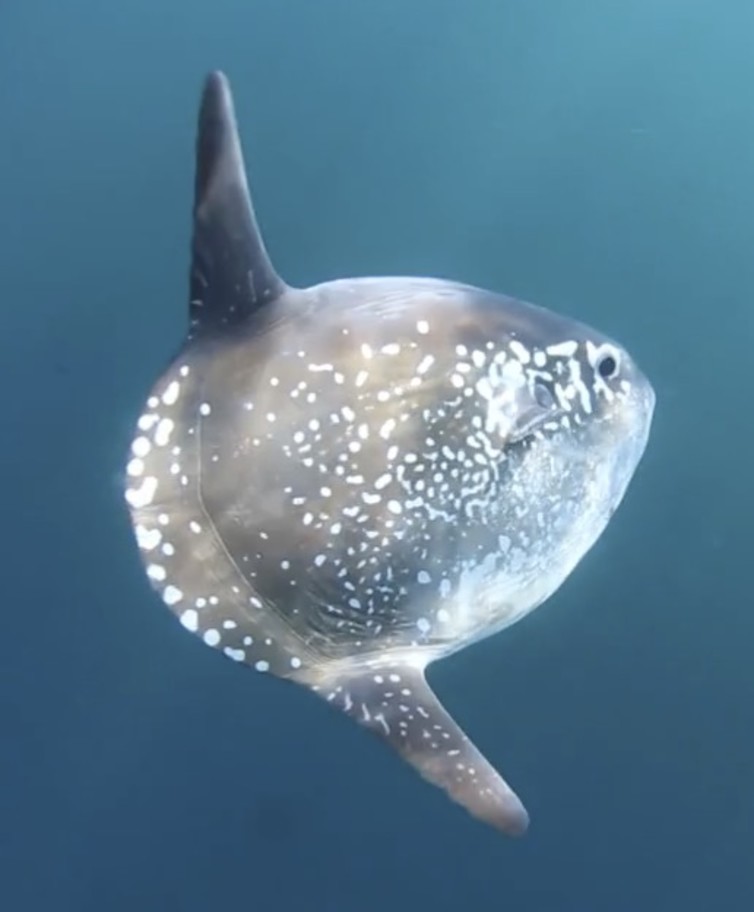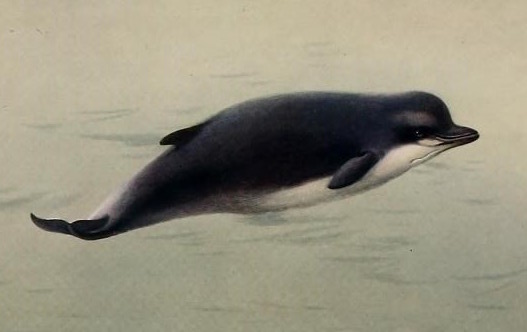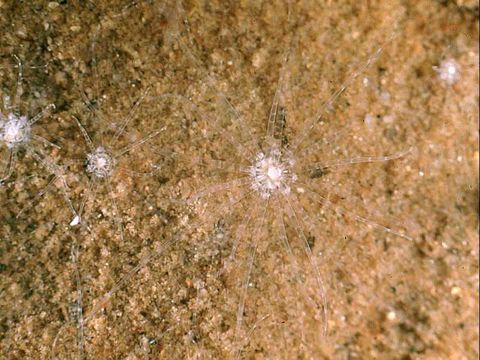Aquatic scientific names in the news …
A new species of Ocean sunfish has been described in the paper, Hiding in broad daylight: molecular and morphological data reveal a new ocean sunfish species (Tetraodontiformes: Molidae) that has eluded recognition, published in the Zoological Journal of the Linnean Society.
 Marianne Nyegaard with a beached hoodwinker sunfish. Image: Murdoch University
Marianne Nyegaard with a beached hoodwinker sunfish. Image: Murdoch University
The new species, Mola tecta, is the result of a four year search centred around genetic sequencing. During her research Marianne Nyegaard analysed more than 150 samples of sunfish DNA, her results indicated that the samples belonged to four distinct species, Masturus lanceolatus, Mola mola, and Mola ramsayi along with a fourth unknown species. The search for the unknown species was carried out by looking at pictures of sunfish on social media as well as pictures sent by observers from New Zealand and Australian fisheries in an attempt to find photographs of a previously undescribed sunfish
In 2014 a small specimen was found tangled up in fishing line, it was hauled out of the water to be freed, photographed and a genetic sample was taken. The search culminated with four fish being stranded in one go on the same beach in New Zealand.
Ultimately enough fish were found to describe this species ranging in size from 50cm to nearly 2.5m. Unlike the other species, they don’t develop lumps and bumps as they grow. Their back fin is separated into an upper and lower part, with a small flexible piece of skin, which has been termed the “back-fold”, connecting the halves.
 Hoodwinker sunfish off the coast of Chile. Image: César Villarroel, ExploraSub
Hoodwinker sunfish off the coast of Chile. Image: César Villarroel, ExploraSub
Sunfish aren’t particularly rare, but they’re tricky to study as they live in parts of the ocean most humans don’t go. Their exact range is unknown but it seems to be the colder parts of the Southern Hemisphere. They’ve been found all around New Zealand (mostly around the South Island), off Tasmania, South Australia, Victoria and New South Wales (Australia), South Africa and southern Chile.
It seems likely that, given its size, this will be the largest new species to be described this year.
Etymology.
Mola tecta Nyegaard, 2017, the Hoodwinker sunfish
Mola – Latin, mill, millstone; grinders, molar-teeth. Alluding to the to the fact that the fish is similar in shape to a millstone (G. Rondelet De Piscibus Marinis1554).
tecta – Latin, hidden; secret, concealed, disguised. Name alluding to the species having been hiding in plain sight for centuries.
See also: Ocean sunfish.




 Image: National Museums Northern Ireland
Image: National Museums Northern Ireland